What is Bituminous Membrane
- Home
- Water Proofing
- Waterproofing Products
- Bitumen Membrane
- What is Bituminous Membrane
What is Bituminous Membrane
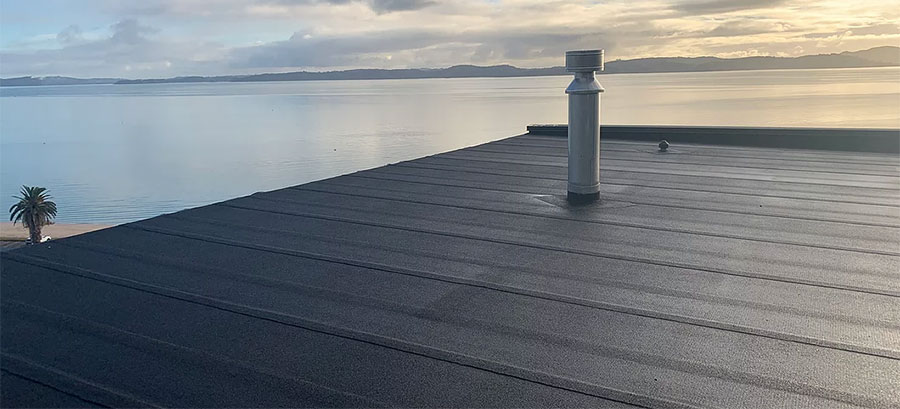
Bituminous Membrane
Bituroll Membranes are plastomeric waterproofing membranes, manufactured from a rich mixture of bitumen and selected polymers (Atactic Poly Propylene) blended together to obtain excellent heat and UV resistance and waterproofing properties. A waterproofing membrane is a thin layer of water-tight material that is laid over a surface. This layer is continuous and does not allow water to pass through it. For example, on a flat terrace, a waterproofing membrane could be laid above the structural slab and below the finish tiles. This will ensure that water does not seep into the structural slab. The tiles and membrane must be laid over a filler material that is sloped to ensure that water flows into sumps and drains. Any water that remains as puddles over the tiles is likely to seep into the slab over time, so puddles are to be avoided at all costs.
Ideally, a waterproofing membrane should be strong, flexible, tear-resistant and elastic so that it can stretch to cover cracks and also move with the building. If the membrane is to be exposed to the sun, then it should be UV stable. The membrane should be flexible enough to take any shape it is laid over, and be capable of turning up and over walls and other construction features.
Features of Bituminous Membrane
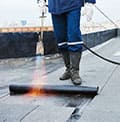
High puncture and fatigue resistance. Good heat resistance.
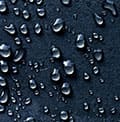
Excellent resistance to a positive water and vapour pressure.
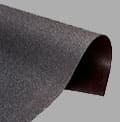
Dimensional stability under tension. High tensile & tear strengths.
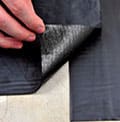
Accommodate structural movements because of excellent flexibility.
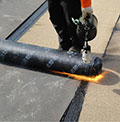
High chemical resistance and Factory manufactured rolls are easier to install.
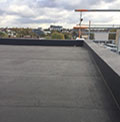
A premium solution for Roof Waterproofing and easy to repair.
Materials Used
Waterproofing membranes are made from several one or more layer materials such as rubber, elastomer, polyethylene, polypropylene, bitumen, polyvinyl chloride (PVC), polyurethanes, ethylene propylene diene monomer (M-class) rubber EPDM, silicate, bentonite clay, fabrics, fiber glass, Cementitious high-build coatings, composite layers, resin coatings, plastic sheeting, polymer liners, mastics and metal sheet.
The material should also have some degree of flexibility and be able to resist differential movement. This is especially important for waterproofing membranes in structures that may move/settle (i.e. bridges).
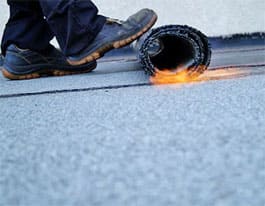
The most important property of the waterproofing material is the material’s water absorption rate. A satisfactory rate is below 4% (most materials are between 1-2%). Also important is the thickness of the material. Most manufactured materials have a uniform thickness making the application even and easy. The manufacturers state that their protective coatings are can be applied smoothly. This smooth, liquid-only appearance provides a monolithic application with no seams and therefore no weaknesses for cracks to form.
Site Considerations
-
Soil characteristics:
Before construction begins, the soil should be tested to observe the water table level, the presence of hydrostatic pressure, and the chemicals found in the soil. The materials selected must be able to perform at the highest possible hydrostatic water pressure in the area as well as not degrade in the presence of the soil's chemical composition. Acids and alkaline in the groundwater can weaken the concrete and steel reinforcement bars. Soil compounds such as salt, sulfates, calcium hydroxides, oils, and chemicals from fertilizers can react with the compounds in the cement or corrode the steel bars. The physical properties of the soil should also be tested. For example, clay soils that have a low permeability limit underground hydrostatic pressure. -
Water table:
The water table level is important because it determines not only the type of waterproofing required but whether waterproofing is required by code. The International Building Code requires that waterproofing be applied to all below-grade structures where the groundwater table has maintained a minimum of six inches below the ground slab. The water table test should be done when the water table is at its maximum.